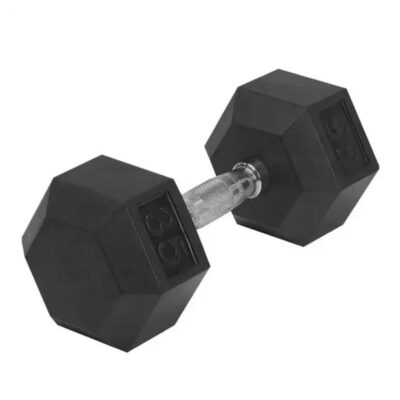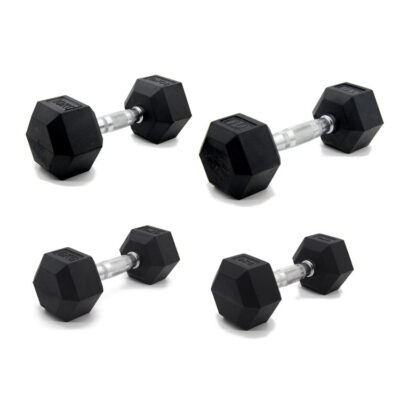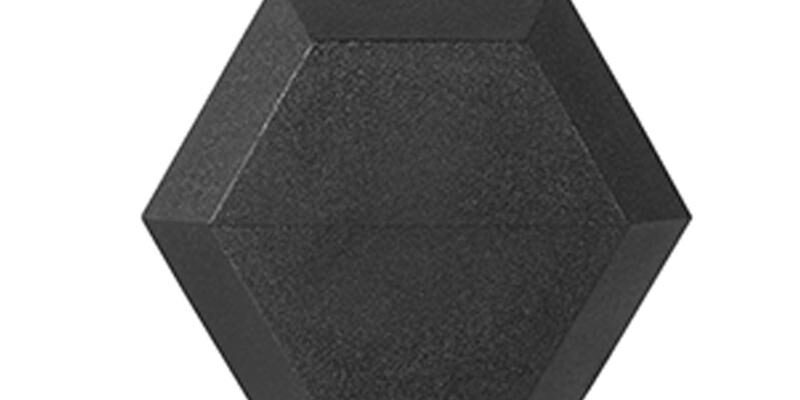Why This Comparison Matters for Procurement
✔️ Lifecycle Value vs. Upfront Price
When specifying dumbbells for gyms, hotels, or institutional facilities, procurement teams often face the question: should we invest in rubber or urethane? On paper, urethane dumbbells carry a higher unit price, but their extended service life can reduce long-term replacement costs.
✔️ Aesthetic & Branding
Premium fitness environments demand equipment that not only performs well but also projects a high-end image. Urethane coatings maintain a fresh, polished look longer, while rubber may degrade or fade over time.
Step 1 — Initial Procurement Costs
🔹 Rubber Dumbbells
Lower entry cost, typically 30–40% cheaper than urethane.
Widely available through large-scale Dumbbell Manufacturers.
Suitable for mid-range gyms and budget-sensitive tenders.
🔹 Urethane Dumbbells
Higher upfront cost due to premium materials and tooling.
Positioned as a long-term investment, especially for high-traffic gyms, universities, and corporate fitness centers.
Step 2 — Durability & Maintenance
✔️ Rubber Dumbbells
Prone to surface wear, chipping, and odor emission under heavy use.
May require partial replacement within 2–3 years in high-traffic environments.
✔️ Urethane Dumbbells
Superior abrasion resistance, non-marking finish, and odor-free.
Service life often exceeds 5–7 years, making them cost-effective in long contracts.
Leading Urethane Dumbbells Manufacturers provide warranties up to 5 years.
Step 3 — Branding & Customization
🎨 Logo Options
Rubber: Painted logos wear off faster.
Urethane: Molded or laser-etched logos remain visible for years.
🎨 Color Coding
Rubber: Limited to black with minimal accents.
Urethane: Wide Pantone matching, better suited for premium or branded environments.
Step 4 — Member Experience & Safety
✔️ Rubber Dumbbells
Absorb shock well, but odor can be noticeable in enclosed gyms.
Hexagonal options prevent rolling, making them safer in busy weight rooms.
✔️ Urethane Dumbbells
Smoother finish and consistent grip.
Easier to clean and disinfect—important for institutional gyms, schools, and hospitality projects.
Step 5 — 5-Year Cost of Ownership Model
📊 Example for a 10–30 kg Set (2.5 kg increments):
Rubber Set (20 pairs):
Upfront: $6,500
Replacement (30% over 5 years): $1,950
Total 5-Year Cost: $8,450
Urethane Set (20 pairs):
Upfront: $10,000
Replacement (10% over 5 years): $1,000
Total 5-Year Cost: $11,000
➡️ On paper, rubber remains cheaper, but urethane delivers superior branding and reduces replacement frequency—critical for gyms aiming at premium positioning.
Step 6 — Logistics & Supply Chain
📦 Lead Times
Rubber dumbbells: Typically 30–40 days production.
Urethane dumbbells: Slightly longer due to tooling and curing, averaging 45–60 days.
📦 Freight
Both options are heavy and costly to ship, so optimizing palletization is essential. Buyers should request cubic efficiency data during RFQ.
Final Thoughts for B2B Buyers
Choosing between rubber and urethane dumbbells depends on your facility’s priorities:
If budget and short-term ROI are key, rubber is the logical choice.
If branding, long-term durability, and premium positioning matter, urethane is the smarter investment.
By comparing specifications from trusted Dumbbell Manufacturers and specialized Urethane Dumbbells Manufacturers, procurement teams can model lifecycle costs and make informed sourcing decisions.

















